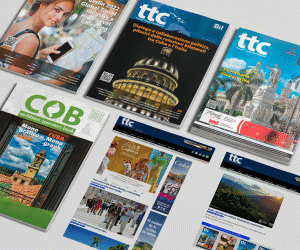Making AI the passenger for smarter tourism

Woman standing at airport lounge looking at her mobile phone and smiling. Business traveler at airport waiting for the flight.
Research in the International Journal of Reasoning-based Intelligent Systems has shown how artificial intelligence can be used to make personal recommendations on stopping-off places when one is traveling. The approach could optimize the route one takes and so reduce travel times and fuel consumption if traveling by road, for instance, while at the same time offering surprising and interesting places one might visit that reflect one’s individual preferences and practical constraints. The system moves away from conventional travel planning, which typically suggests only the most popular destinations and largely ignores user needs or schedules.
The researchers introduce a “point-of-interest correlation diagram.” This tool maps how tourists interact with different attractions over time based on geotagging data from a well-known photo-sharing website. It spots patterns in preferences that go beyond surface-level interest. Then, the algorithm, based on principles from content-based recommendation systems, offers the user potentially the most interesting destinations that will fit their schedule.
In tests, tourist satisfaction with the suggested routes scored well over 90%. As mobile apps increasingly replace traditional guidebooks and group tours, travelers are always on the lookout for tools that can recommend new places to visit but can also adapt to their behavior. The present system could help make better use of limited vacation time, improve the quality of experiences, and even ease the pressure on heavily trafficked tourist sites by encouraging exploration of under-visited areas.
More information: Dongmei Ge et al, Study on intelligent travel route recommendation method based on popularity of interest points, International Journal of Reasoning-based Intelligent Systems (2025). DOI: 10.1504/IJRIS.2025.146930

MORE NEWS










